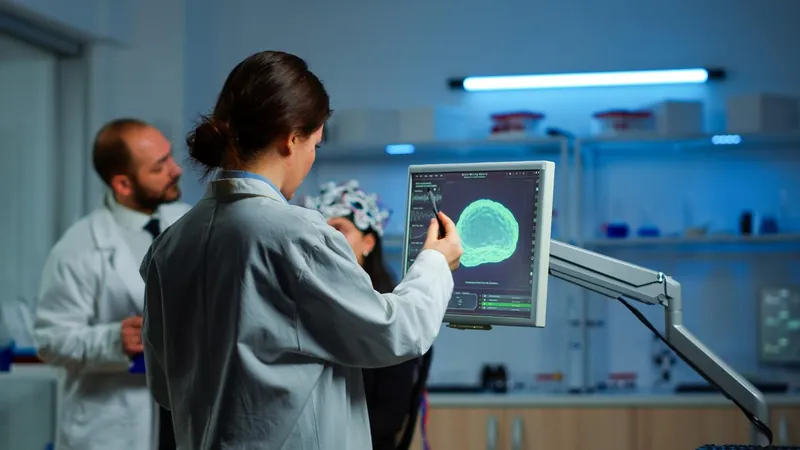
Breakthroughs in Medicine: Visualizing 'Zombie Cells' and a New Hope for Heart Health
2025-05-12
Author: Ming
Unlocking the Mystery of 'Zombie Cells' in Osteoarthritis
In a groundbreaking study, researchers from Stanford and Northwestern have revealed an innovative MRI agent designed to illuminate dormant "zombie cells" that play a crucial role in osteoarthritis. This degenerative condition, which afflicts over 30 million adults in the U.S., involves the breakdown of cartilage and can drastically affect quality of life.
These so-called zombie cells are senescent—alive yet non-functional. Despite their inactivity, they release harmful molecules that can deteriorate surrounding tissues, exacerbating conditions like osteoarthritis, especially in older adults. Until now, targeting these cells was a major challenge, but this new visualization technique may revolutionize treatment.
Utilizing gadolinium, a contrast agent typically used in MRIs, the team developed a clever "cage" mechanism that selectively reacts with a specific protein found in senescent cells, allowing them to visualize and track these problematic cells. Heike Daldrup-Link, a professor of radiology, affirmed that this advancement could significantly reduce the time it takes to assess arthritis severity, providing quicker insights than current methods.
A New Strategy Against Cardiac Fibrosis
In a separate, exciting development, Stanford researchers have unveiled an innovative approach to combat cardiac fibrosis—a serious condition marked by the scarring of heart tissue that currently has no effective treatments. This scarring compromises the heart’s ability to contract, increasing the risk of heart attacks.
The team’s research identified SRC, a protein that becomes noticeably activated in diseased hearts. They screened for compounds that could inhibit SRC’s actions and landed on saracatinib, a compound previously explored in cancer therapies. Their experiments showed that saracatinib not only reduced the impact of fibrosis but, when paired with another treatment targeting fibroblast activation, restored the contractile functions of heart muscle cells.
Joseph Wu, director of the Stanford Cardiovascular Institute and senior author of the study, emphasized that this promising approach could pave the way for effective treatments without harming other essential heart cells.


 Brasil (PT)
Brasil (PT)
 Canada (EN)
Canada (EN)
 Chile (ES)
Chile (ES)
 Česko (CS)
Česko (CS)
 대한민국 (KO)
대한민국 (KO)
 España (ES)
España (ES)
 France (FR)
France (FR)
 Hong Kong (EN)
Hong Kong (EN)
 Italia (IT)
Italia (IT)
 日本 (JA)
日本 (JA)
 Magyarország (HU)
Magyarország (HU)
 Norge (NO)
Norge (NO)
 Polska (PL)
Polska (PL)
 Schweiz (DE)
Schweiz (DE)
 Singapore (EN)
Singapore (EN)
 Sverige (SV)
Sverige (SV)
 Suomi (FI)
Suomi (FI)
 Türkiye (TR)
Türkiye (TR)
 الإمارات العربية المتحدة (AR)
الإمارات العربية المتحدة (AR)